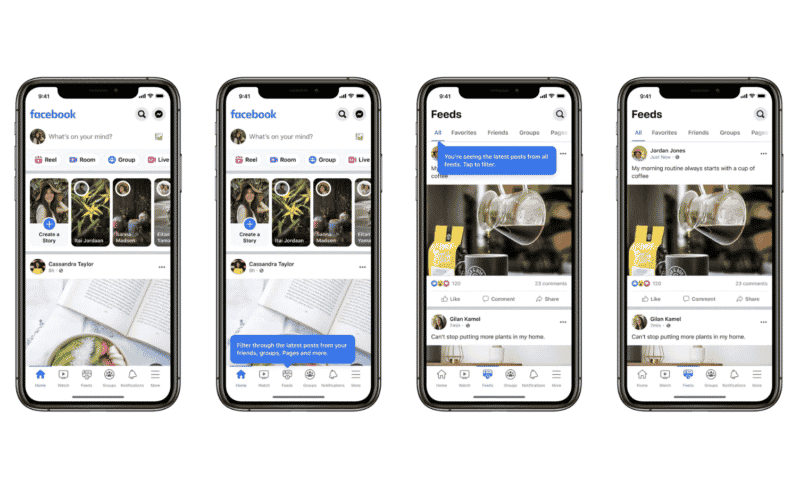TikTok sfida Google, vuole diventare un motore di ricerca. La Silicon Valley trema
Che TikTok sia diventato centrale anche nel discorso pubblico l’abbiamo scoperto anche noi italiani qualche settimana fa, quando i politici si sono fiondati in massa sulla piattaforma più amata dai giovanissimi per proseguire anche lì la loro campagna elettorale: va detto, con alterne fortune.
Dalle mosche sterminate in diretta di Silvio Berlusconi alle recensioni di libri di Carlo Calenda, dalla passione di Matteo Salvini per i filtri fino agli auto-tormentoni di Matteo Renzi («shish» e «first reaction shock»), non c’è stato leader di partito che non si sia lanciato nell’epica impresa di conquistare i giovani cercando di parlare il loro linguaggio, attirandosi più di un’ironia, spesso da parte degli stessi obiettivi (il video di Emma Galeotti, al grido di “non siamo scemi”, l’hanno visto un po’ tutti).
E c’è stato perfino il problema di chi si è filmato in cabina elettorale mentre votata per fare un TikTok (vietatissimo: si rischiano dai 300 ai 1.000 euro di multa e perfino l’arresto da 3 a 6 mesi). Insomma, forse le tattiche dei politici nostrani non sono state troppo efficaci, ma l’intenzione era comprensibile: i più giovani (e non solo) sono, in effetti, quasi tutti lì, in massa.
La Silicon Valley adesso ha paura
TikTok, secondo gli ultimi dati Audiweb disponibili (aprile 2022), è frequentato da un terzo del totale delle persone che usano Internet, con utenti unici mensili che ormai si aggirano intorno ai quindici milioni. L’Italia, com’è noto, vanta anche il primato di Khaby Lame, in assoluto l’utente più seguito su TikTok al mondo. Il modello indubbiamente funziona, considerando che quest’anno TikTok genererà un fatturato atteso di circa 12 miliardi di dollari (l’anno scorso erano stati 4) e che nel 2021 ha superato Google come sito più popolare del mondo.
È stata indubbiamente vincente l’intuizione di lanciarsi nei video, un contenuto che fino a pochi anni fa era troppo “esoso” in termini di risorse (soprattutto con le fotocamere più avanzate, anche un filmato di pochi secondi poteva essere lento da visualizzare, e ancora di più da caricare) ma che oggi, con il 5G e il progressivo abbassamento delle tariffe mensili per la telefonia mobile (su SOSTariffe.it si possono trovare le offerte attualmente più interessanti), è più che gestibile. E gli inserzionisti si stanno muovendo di conseguenza, abbandonando i siti più tradizionali – con non poche preoccupazioni da parte della Silicon Valley – e puntando in massa sul nuovo mercato, assai più redditizio di quello statunitense, in contrazione da mesi e sempre più messo in difficoltà dai problemi di privacy.
Un algoritmo che funziona troppo bene
Il social è molto ambizioso anche per il suo futuro, come mostrano alcune delle mosse del colosso cinese ByteDance, proprietario di TikTok e pienamente conscio della sua potenza, negli ultimi tempi. La fiducia è tanta da poter perfino ipotizzare la sfida a un mostro intoccabile: ancora Google, non l’azienda ma proprio il motore di ricerca, che da venticinque anni è per tutti lo standard, e addirittura il sinonimo. Per capirci, Google ha il 92% del mercato mondiale, e il secondo classificato, Bing – che si avvantaggia soprattutto del fatto di essere il motore di default per Edge, il browser che ha preso il posto di Internet Explorer nei PC Windows – non va oltre il 4%. Un mercato difficilissimo, un sostanziale monopolio, contro il quale si sono schiantati in tanti, ma ironicamente TikTok ha dalla sua lo stesso asso nella manica che, nel 1997, ha mostrato Google al mondo: un algoritmo incredibilmente efficace.
Chi arriva per la prima volta su TikTok sa che per i primi giorni riceverà raccomandazioni un po’ casuali, ma man mano che le sue preferenze verranno registrate, si ritroverà video sempre più adatti ai suoi interessi. Per TikTok è vitale, visto che, com’è noto, la soglia d’attenzione dei giovani, bombardati da contenuti tutto il giorno, non è particolarmente alta, e il segreto della fortuna della piattaforma è stato proprio quello di capitalizzare sull’immediatezza, con video da pochi secondi. Per questo, riuscire a interessare in pochi secondi è essenziale, e l’algoritmo serve proprio a raggiungere tale obiettivo.
Il fatto è che il suddetto algoritmo funziona talmente bene che i giovani hanno cominciato a usare le ricerche su TikTok al posto di quelle di Google, ovviamente per uno specifico genere di richieste: non tanto le informazioni più astratte, ma quelle più legate alla quotidianità, dai video su “Come si fa” un determinato lavoro alle ricette, passando per consigli di viaggio e ristoranti. E qui il vantaggio di TikTok rispetto a un blog è evidente: non ci sono righe e righe di testo da superare prima di arrivare al contenuto che si sta cercando, ma l’algoritmo ce lo offre subito pronto, nel giro di pochi secondi.
Come (non) fare l’idrossiclorochina in casa
I rischi però non mancano, visto che parlare di ricerca di informazioni oggi fa inevitabilmente rima con fake news. Secondo un’indagine di NewsGuard, che ha analizzato 540 risultati di TikTok riguardanti i primi 20 emersi da 27 ricerche su altrettanti argomenti di attualità, quasi uno su cinque – il 19,4% – è inaffidabile o fuorviante, dati ben più alti di quelli di Google. Non si tratta però di “semplici” complottismi, o dati sbagliati o comunque disinformazione, se non inoffensiva, almeno non troppo rischiosa nell’immediato: i pericoli possono essere molto più concreti, come i suggerimenti per la creazione di composti chimici nella cucina di casa propria, ad esempio l’idrossiclorochina per curare la malaria che certo non va preparata (né assunta) con il “fai-da-te”, ma di cui si trovano ben quattro video di ricette per così dire casalinghe.
Ancora peggio se, come spesso si sente dire, l’idrossiclorochina è in grado di curare anche il Covid, il che è ovviamente falso. Oltretutto il segmento che viene attaccato da questa disinformazione dannosa è più vulnerabile di altri, visto che spesso i giovanissimi non hanno ancora gli strumenti per discernere la veridicità e l’affidabilità di una fonte, soprattutto se si sono abituati fin dalla più tenera età a rivolgersi a TikTok come se fosse un oracolo e la risposta a tutte le proprie domande. Anche per questo, forse, la piattaforma ha appena implementato il tasto “Non mi piace”, per segnalare più facilmente contenuti che su TikTok non dovrebbero proprio stare.
https://www.key4biz.it/tiktok-sfida-google-vuole-diventare-un-motore-di-ricerca-la-silicon-valley-trema/417851/





















